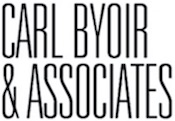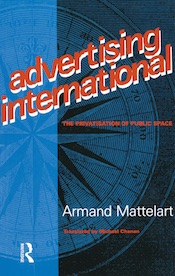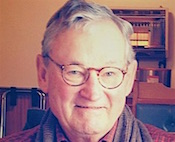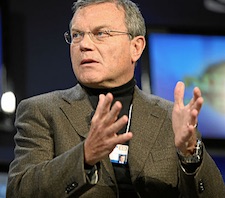The death July 22 of Peter Osgood, head of Carl Byoir & Assocs. from 1983-86 and vice chair of Hill & Knowlton from 1986-91, recalls the destruction of Byoir, once the No. 3 PR firm.
It had revenues of $17 million in 1985, 200 clients and 300 employees, 175 in New York It was sold in 1978 to Foote, Cone & Belding for about $3M. It was then billing $11M.
The obit of Osgood as supplied by stepson Alex Jessup of Jessup PR is at the end of this posting.
|
|
 |
Hill & Knowlton, acquired by J. Walter Thompson in 1980, bought Byoir in October, 1986 for a reported $12M in cash. JWT in the same month acquired Gray and Co., Washington, D.C., for stock worth $17M. The addition of Byoir and Gray restored H&K temporarily to its position as the largest PR firm.
By 1996, only three Byoir New York staffers were left—Lee Silberman, Jack Griffin and secretary Pearl Lester. Virtually all accounts, branch offices and numerous media-orient services were lost or closed. The financial news dept. which once had 37 NYSE clients was closed. “The place got unrecognizable in recent years,” said one ex-staffer.
Byoir, a WPP company, still exists as a firm with h.q. in Los Angeles headed by Maureen Crow as CEO, according to a Bloomberg listing. Crow's bio says she served from 1995-2001 and is now a consultant to Fordham University. Offices were also listed in Sydney, Australia and Milan, Italy, according to the Bloomberg listing.
No. 1 Firm Erases No. 3
The press-resistant No. 1 firm had acquired the press-friendly No. 3 firm and destroyed it.
Byoir was staffed by many former reporters. New hires had to have five years at a wire service or major news medium. Extensive efforts at building press ties not only included lunches and dinners with reporters but invites to the homes of execs, golf dates and invites to other functions.
Byoir execs were stars and cast members of the annual “Financial Follies” of the New York Financial Writers Assn. CEO George Hammond was president of PRSA in 1969. The firm hosted a hotel room with alcoholic drinks on Election Day for reporters at a time when it was illegal for such sale. Two states still ban alcohol sales on Election Day—Massachusetts and Alaska.
Staff morale and bonding were high. Alumni gathered in New York for a dinner Sept. 27, 2011, commemorating the 25th anniversary of the sale to H&K. Organizers were Virgil Scudder, Nancy Glaser, Bob McEwen and Allen Faust.
Byoir Lost Accounts, People
Byoir, under the supervision of FC&B, lost many big accounts starting in 1983. Departing were RCA (34 years); Hughes Tool and Aircraft (40 years); Hallmark (37); CIT Financial (33); Borg-Warner (20); ACF (17) and Fireman’s Fund (14). Also lost was ITT, a $500K account, along with Northeast Utilities, Wool Bureau and Aspirin Foundation.
Robert Wood, longtime president under CEO George Hammond and later chairman and CEO, said he was not allowed to influence policy after Osgood joined as CEO on March 1, 1983. He said that until 1983, Byoir had never lost an account to another firm.
Osgood and Abbott Jones, president of FC&B, who carried out the dissolution of Byoir, were operating under the supervision of Martin Sorrell, CEO of WPP, which made a hostile takeover of JWT in 1987.
The first major move of Jones and Osgood was the firing of nine executives and six support staffers on “Bloody Friday” March 18, 1983. Two other execs quit.
“I told them not to do that three times,” said Wood. “If we let people go, it was one at a time.” He feared the firings would not only hurt staff morale but client relationships.
 |
Age Bias Suits Filed vs. Byoir
One result was five age discrimination suits that were not settled until 1986. Others also left the firm. By May of 1986, 22 VPs or above had departed Byoir/NY.
Other changes made by Jones/Osgood and FC&B execs John O’Toole, Bill Worth and David Ofner were ditching most of the 17 departments that specialized in placements in magazines, radio-TV, newspapers, life-style media, etc. Full-time reps at clients, an agency tradition that saw Byoir people at 27 clients at one time, were mostly dropped. The central copy desk under John Stahr was cut as was the policy of having a few specialists handle all media contacts.
“Bloodiest Takeover” in Ad History
Armand Mattelart, author of Advertising International: The Privatization of Public Space, said the WPP move was “the most bloody takeover in the history of advertising.” WPP, in buying Young & Rubicam in 2000, also added Burson-Marsteller, one of the three biggest PR firms. It had been purchased by Y&R in 1979.
Mattelart called CEO Martin Sorrell “the king of mortgage finance.”
Current debt of WPP on revenues of $18.6 billion, is $8.51B. Debt/equity ratio is 67.24. Omnicom, on revenues of $15.4B, has debt of $4.98B. Interpublic, on revenues of $7.86B, a debt of $1.92B.
Congloms On Acquisition Binge
WPP, Omnicom, Interpublic and other companies purchased 16 of the 25 biggest PR firms on the 1980 ranking in O’Dwyer’s Directory of PR Firms.
Six were in the “Top Ten”—H&K, B-M and Byoir, the three biggest; Manning, Selvage & Lee, Doremus & Co., The Rowland Co. and Ketchum, MacLeod & Grove. Harshe-Rotman & Druck, sixth biggest, was acquired by Ruder & Finn, fourth biggest, in 1981.
The advertising industry soon clamped down on many of the informational practices of the PR firms.
Disappearing was the client list of more than 400 that H&K posted in O’Dwyer’s Directory. The Byoir client list had vanished upon its purchase by H&K.
|
|
Don't Buy, Don't Tell
Congloms and others pursued a policy of “Don’t Buy, Don’t Tell” with the PR trade press, meaning don’t spend money on it and tell it as little as possible. As a result, nine PR media ceased publication—three by Ragan, two of Paul Holmes including a monthly magazine (The Holmes Report continues as an online NL), plus PR Reporter NL, PR Quarterly, Bulldog Reporter (sold and now online), and PR Newser.
The congloms, meanwhile, pumped millions into ads in PR Week/U.S., a publication of U.K.-owned Haymarket. PRW/U.S. went monthly in 2009.
Another casualty of the policy of silence was The New York Times ad column, chopped at the end of 2014 when Stuart Elliott, after a 23-year run, took two years’ retirement pay. Sydney Ember, a 2012 grad of Brown University, was to take over the column but it did not happen. Apparently, too many ad agencies withheld input.
The text below is from the Dec. 17, 2003 O’Dwyer’s NL and has important historical points.
Byoir Execs Felt Betrayed by Hammond
This year is the 25th anniversary of Byoir's sale to Foote, Cone & Belding and time for a look at what this has meant to PR.
George Hammond had gained control of Byoir and made the decision himself. Fellow executives felt betrayed.
His close friend, Robert Carney, former chairman of FC&B, had become a director of Byoir. Carney promised the firm total independence.
Hammond didn’t realize it, but he had signed the death warrant of the firm, whose culture prized good writing and relationships with the press. New hires had to have five years at a major news medium and had to take an extensive writing test.
Asked why CB&A sank after its purchase by FC&B, a former Byoir executive told us: "FC&B didn't understand the PR business." The collaborative, almost "family" working atmosphere of Byoir meant no one was ever "fired." On occasion, one or two staffers, on request, might depart at a leisurely pace.
“Bloody Friday” Jarred Staffers
FC&B, which saw profits plummet 8.9% in 1982, engineered "Bloody Friday" at Byoir on March 18, 1983. Nine execs were summarily canned, two quit and a half dozen or so support staff were fired.
Five vets sued on grounds of age discrimination and won although the legal battle lasted years. This brouhaha drained Byoir financially and emotionally.
If FC&B didn’t understand Byoir, neither did Byoir understand FC&B. "Byoir never worried about being profitable," said former Byoir executives. Clients got unlimited access to the top seven execs for $50,000 a year. Profits came out of this. Staff and expenses were billed at cost. Byoir, which stationed its people at major clients, unwittingly became an unpaid executive recruiter for the client.
The next blow was the sale of the firm to Hill & Knowlton in 1986. H&K s parent, JWT Group, was acquired by the WPP Group in 1987 in a hostile takeover. WPP's Martin Sorrell told 50 worried H&K staffers on June 26, the day of the buyout, that he would not change the management, culture or generous benefit plan of H&K.
Radical Changes Took Place Despite Promise
But changes did take place. H&K CEO Robert Dilenschneider quit in 1991 after a conversation with Sorrell. H&K, which used 400+ clients in O'Dwyer's Directory of PR Firms, stopped identifying clients at all, among many other changes.
The Byoir agency did not fare well at H&K, whose culture was more formal and oriented to counseling as opposed to providing written press materials.
Hammond, after selling Byoir, called up the head of another big PR firm and said, "Jean (his wife), Wendy and Craigie (their daughters) will never have to worry."
Byoir Repped German Tourist Bureau
Lest we paint too rosy a picture of Byoir, it had its darker moments. The firm, using the German Tourist Bureau as a blind, signed an 18-month contract with the Hitler government for the huge sum of $6,000 a month starting Nov. 1, 1933. This was long after Hitler s anti-Semitic bent was evident. Rallies were being held in Madison Square Garden demanding a boycott of German goods.
Carl Byoir argued against the boycott, saying it would create ill will against the German people who would soon dispense with Hitler. He called Hitler and other dictators "but temporary and puny obstructions." Ivy Lee also worked at $25K a year for Hitler, using the German Dye Trust as a blind.
Both firms were outed and excoriated in Congress. The Foreign Agents Registration Act was then passed in 1938. Byoir in the 1950 s created false fronts (farmer groups, etc.) to oppose an increase in loads trucks could carry. The hidden client was the railroads. Byoir and the railroads were found guilty of an illegal conspiracy in 1957 but the Supreme Court overturned it in 1961.
Having purchased most of the major PR firms, the congloms in 1998 set out to control the rankings of firms by wresting them from this NL, PR Week and The Holmes Report, which had been doing them.
They set up the Council of PR Firms. Participating firms were not required to provide any proofs of their numbers nor even identify clients. CPRF allowed ad commissions. But the rankings developed a big hole in 2002 when the congloms, the initiator of the rankings, stopped letting their own 40+ PR firms report any figures because of possible liability under the Sarbanes-Oxley Act.
Obit of Osgood as supplied by stepson Alex Jessup:
Peter Greer Osgood, 76, of Sedgwick ME died in peace Saturday, July 22, 2017, at Eastern Maine Medical Center in Bangor ME.
Peter was born December 26, 1940, in Waltham MA to Katherine (Greer) and Ernest Osgood. With his younger brother Ernest, who predeceased him, he enjoyed the quintessential New England childhood in Sudbury MA filled with Boy Scout adventures and not a little mischief. He attended The Fenn School, Belmont Hill School and Lincoln-Sudbury High School from which he graduated in 1959.
After high school, Peter enlisted in the US Army and was stationed in Korea. While there as a 19-year-old, he saw a need and, with support from his hometown of Sudbury, started an orphanage for children of war victims. Later, he served in Viet Nam as an information officer. After discharge, Peter attended Syracuse University’s Maxwell School of Citizenship and Public Affairs, graduating in three years (1965) with a B.S. in political science and journalism. Subsequently, he served as chairman of the Syracuse University Communications Advisory Board.
Peter Osgood was a pioneer and leading authority in the field of global communications and investor relations. His 50-year career in public relations began in Boston with Newsome & Co., becoming a major shareholder and CEO. He was past director and national president of the National Investor Relations Institute and a member of the NIRI Roundtable, as well as former chairman and president of the Public Relations Society of America. After selling Newsome and assuming the presidency of Carl Byoir & Associates, Inc., he served as Byoir’s CEO. When Byoir merged with Hill & Knowlton, Inc., Peter served as vice chairman international of H&K. He left the agency to found Osgood, O’Donnell and Walsh. At the end of his career, Peter was owner of Osgood Global, Ltd, with a passport that reflected a lifetime of world travel.
Peter’s skills as a strategic thinker benefited the many non-profit organizations for which he served. Most notably, over the course of his life, he sat on the boards of the Joslin Diabetes Center, Junior Achievement Worldwide and the Business Council for the United Nations. As a director of The Sky Club, atop the then Pan Am Building, he enjoyed a chilled gimlet, followed by Dover sole, overlooking the Manhattan skyline.
Professional accomplishments aside, Peter loved skiing and sailing, building anything from a dollhouse to garden trellises, a postprandial hand of gin rummy with a cold Heineken....and, most of all, his family. He is survived by his wife, Carol, of Bridgeport CT and Sedgwick ME, two daughters and their spouses, Greer (Taryn) McCarthy of Darien CT, and Blaire (William) Bernard of Wenham MA, two step-sons Brooks (Enzii) Jessup of Berkeley CA, and Alex Jessup of Los Angeles CA. Peter also leaves behind four adored grandchildren, Marley, Stewart, Osgood and Evelyn.

 Peter Osgood
Peter Osgood Sir Martin Sorrell
Sir Martin Sorrell
 DJE Holdings, parent of Edelman and Zeno, launches RUTH as an independent shop named after Ruth Edelman, mental health advocate, wife and longtime business partner of Dan Edelman.
DJE Holdings, parent of Edelman and Zeno, launches RUTH as an independent shop named after Ruth Edelman, mental health advocate, wife and longtime business partner of Dan Edelman. New York City PR firms make up the largest slice of O'Dwyer's 147 firm overall ranking with 33 of 40 in the New York/New Jersey area either calling Manhattan their home or having a presence there.
New York City PR firms make up the largest slice of O'Dwyer's 147 firm overall ranking with 33 of 40 in the New York/New Jersey area either calling Manhattan their home or having a presence there. Subject Matter+Kivvit, which joined forces in May, has rebranded as Avoq, an integrated shop with more than 200 professionals in Washington, New York, Asbury Park (NJ), Miami and Chicago.
Subject Matter+Kivvit, which joined forces in May, has rebranded as Avoq, an integrated shop with more than 200 professionals in Washington, New York, Asbury Park (NJ), Miami and Chicago. While PR pros stationed at in-house comms. teams and those working for agencies share many of the same objectives, they also have markedly different top priorities, according to a recent report.
While PR pros stationed at in-house comms. teams and those working for agencies share many of the same objectives, they also have markedly different top priorities, according to a recent report. Edelman is cutting 240 employees or about four percent of its workforce to cope with the cooling down of the PR sector, according to a memo from CEO Richard Edelman.
Edelman is cutting 240 employees or about four percent of its workforce to cope with the cooling down of the PR sector, according to a memo from CEO Richard Edelman.


 Have a comment? Send it to
Have a comment? Send it to 
No comments have been submitted for this story yet.